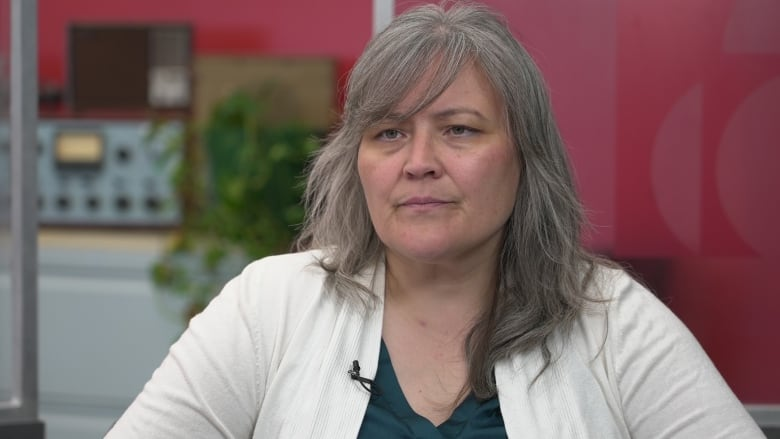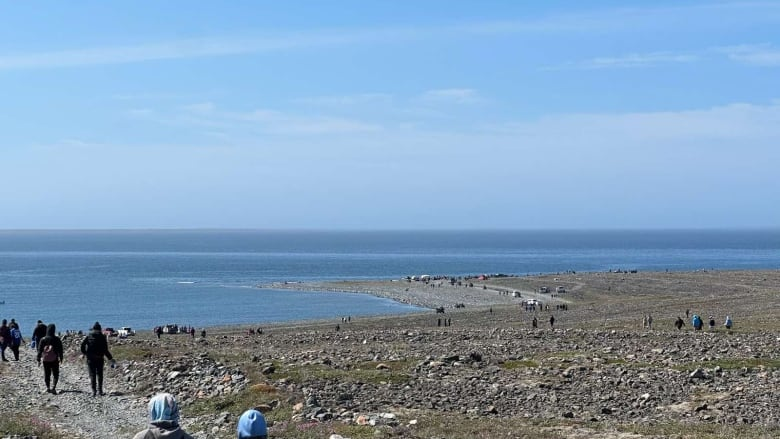Canada News
Nunavut government defends communications in recent petroleum spills

Yvonne Niego is Nunavut’s deputy environment minister. (David Gunn/CBC)
Deputy environment minister say Sanikiluaq spill had low risk to the public
Nunavut’s deputy environment minister maintains government officials did communicate appropriately to municipalities and the public during two recent petroleum spills.
A public statement on the 7,000 litres of diesel spilled outside Rankin Inlet’s power plant on July 17, wasn’t issued by the Qulliq Energy Corporation until seven days later.
Five days after that spill, a human-caused error caused 4,800 litres of gasoline to overflow from a tank in Sanikiluaq, causing the hamlet to call an evacuation.
If she was in the shoes of those Sanikiluaq residents, Yvonne Niego said her first instinct would also have been to protect her family and flee as a precaution.
“However, if I were privy to the information from the government of Nunavut, I believe I would’ve been a lot more assured the community was safe,” the deputy minister said.
‘Protocol was not followed’
Even though a public statement about the incident wasn’t released until after residents were told they could return home six hours later, she said government officials communicated with the hamlet throughout the day.
She said staff from her department assessed the spill shortly after it was first reported. They considered it of low risk to the public, as the valve was closed and absorbent pads were installed around the spill.
Those staff went home for lunch, she said. Upon returning, the hamlet had evacuated the community, without calling a state of emergency.
“The protocols are in place for declaring emergencies. In Sanikiluaq, that protocol was not followed. Therefore it gave time for rumours and a bit of panic to happen,” she said.
Niego also said the department of Environment supports the creation of land farms. These are spaces residential areas to move contaminated soil, to allow it to air out, evaporate, and be treated.

The Hamlets and Emergency Measures Act states the municipality can make such a declaration to get resources from the territorial government, but Niego acknowledges the hamlet can take it upon themselves to deal with an emergency.
With the Rankin Inlet spill, she said there’s no immediate danger because it’s contained within the perimeters of the power plant, and away from residential areas.
Remediation work on that spill is still ongoing.
The risk level
Stafford Reid is the principal of EnviroEmerg Consulting in B.C. He explains that gasoline spills, while highly volatile, require little remediation, if any, as they evaporate easily.
“That’s why the community evacuated to allow that gasoline to evaporate. It was confined within an industrial site within the berms,” he said.
Diesel doesn’t evaporate as easily but they’re less volatile, he said, and can be easily vacuumed up if it’s in a contained area.
Fertilizer and nitrogen are added into any affected soil to reduce the contamination and allow it to naturally degrade, he said, leaving a minimal amount of residue.

There have been 142 contaminant spills in Nunavut this year, according to the territory’s shared spills database with the government of the Northwest Territories.
Though not all are under the territorial government’s jurisdiction. Niego said so far this year, 40 of those spills are the GN’s responsibility, which is below the average of around 60 to 70 for this time of the year.
Residual impacts beyond just ecological
But the effects of that can build up in the environment and in communities, according to Ian Stafford, a science historian who specializes in oil spill management at Halifax’s King’s University.
“Cumulative effects of previous spills can affect the way in which an environment is able to deal with yet another spill,” he said.
“[Hydrocarbons] do biodegrade over time but to varying degrees, there are spills in Nunavut that are decades old and the hydrocarbons are still there.”
The impacts of a spill on trade and people’s livelihoods also concerns him.
“With lives disrupted, how do you remediate that?” he said.
Reid echoes those concerns, which is why he stresses for better preparation, like modelling how fast a spill could spread and analyzing the air quality in advance.
Niego said the government is taking note of data from all the spills to inform future responses, and stresses the importance for the public to report any spills.





















